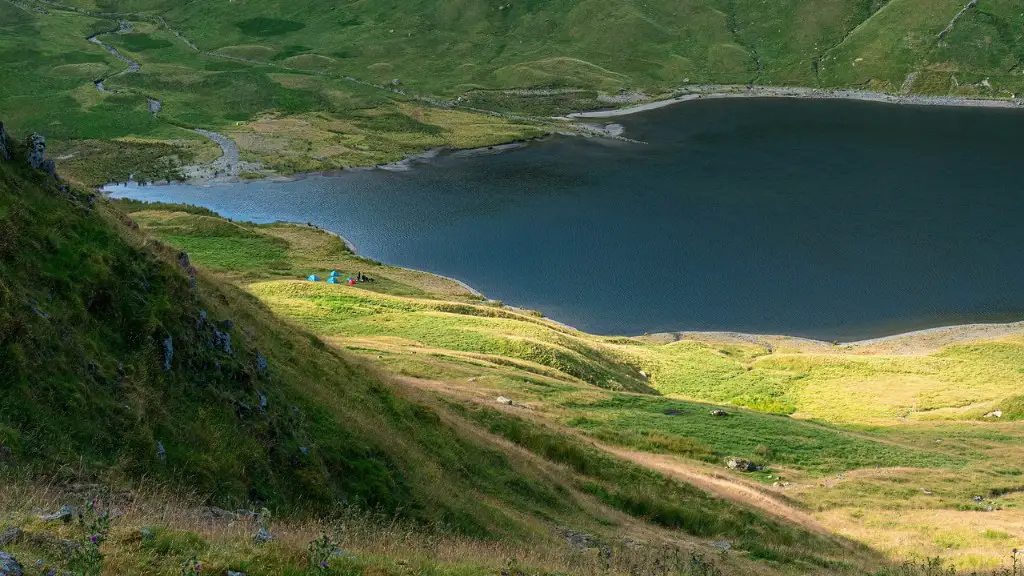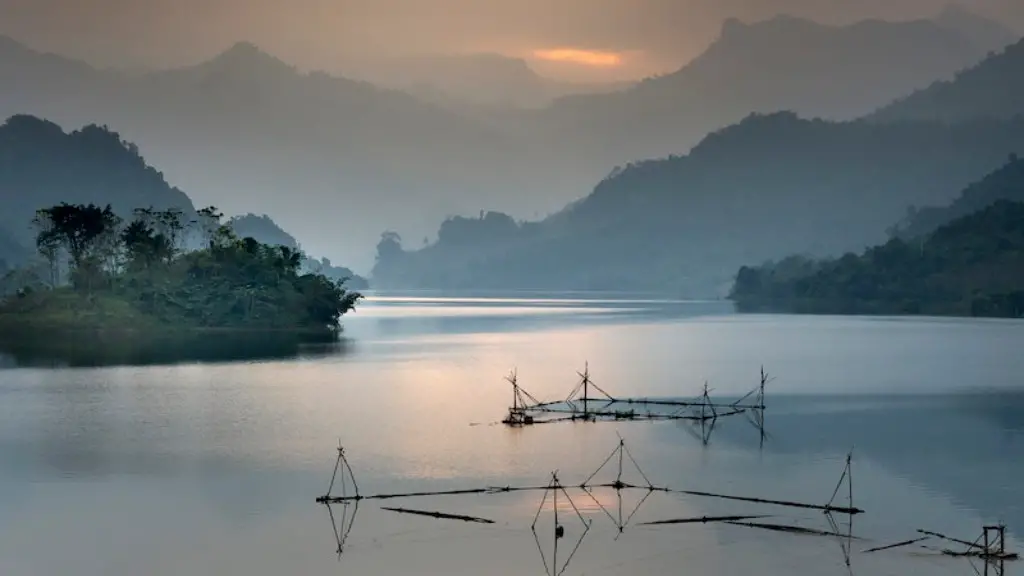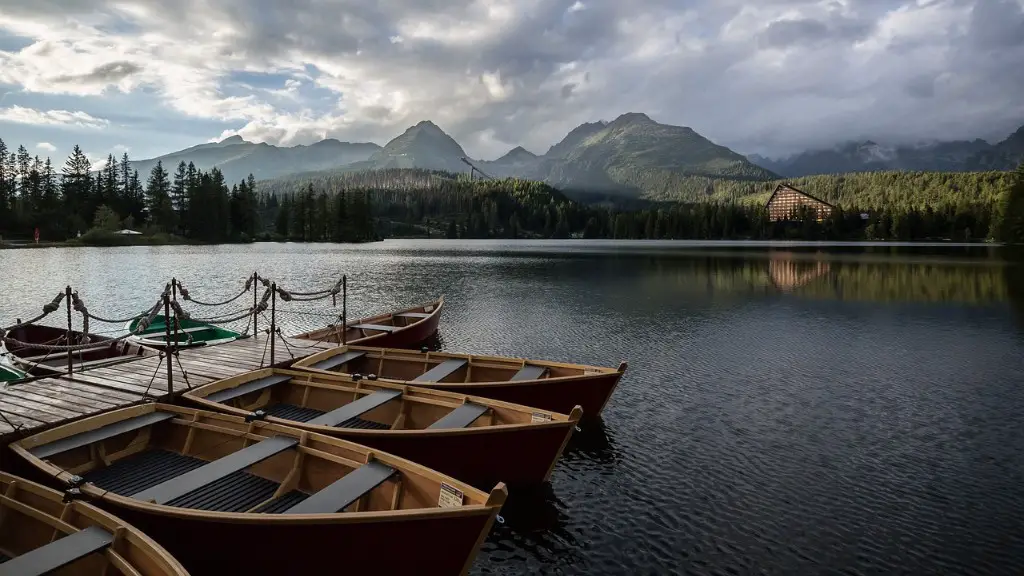What Is a Riptide?
Riptides, also known as rip currents, are powerful and often dangerous currents of water found in seas and large bodies of water such as Lake Michigan. They are formed when waves break and form eddies or reversed currents near the shore. This can pull swimmers or boats offshore and cause them to drift out to sea, or towards treacherous rocks or reefs. In many ways, riptides are like an underwater river, flowing away from shore at speeds of up to five knots.
The best way to protect yourself from a riptide is to understand the danger they pose and how to spot one. Riptides usually have a distinctive appearance, with turbulent water and white foam scattered in the surface. This “feathery” appearance is a telltale sign of a rip current, and should be avoided if possible.
Are There Riptides in Lake Michigan?
The short answer to this question is yes, there are riptides in Lake Michigan. According to the U.S. Environmental Protection Agency, the lake is prone to dangerous rip currents, especially during storms and high winds. These currents can put swimmers and boaters at risk, especially if they are unaware of the danger.
In addition to the EPA, experts from the Great Lakes Environmental Research Laboratory (GLERL) agree that rip currents and other dangerous waves can form along the shores of Lake Michigan. They point out that dangerous conditions can develop when large waves break near shore or as a result of strong currents created by high winds.
The Dangers of Riptides in Lake Michigan
The main danger posed by riptides in Lake Michigan is the risk of drowning. Studies have shown that the lake has some of the highest numbers of drownings in the United States. It is important to remember that rip currents can have an unpredictable and powerful influence on the water, so it is important to stay away from them if possible.
At the same time, it is important to remember that even experienced swimmers can be caught in a riptide and struggle to get back to shore. In particular, rip currents can be incredibly strong and difficult to escape from. That is why it is important to be prepared by understanding the dangers and knowing what to do if you find yourself in a riptide.
Tips to Avoid Riptides in Lake Michigan
The best way to avoid a riptide in Lake Michigan is to be aware of the potential for them. The first step is to always stay within sight of land when out on or near the lake. This can help swimmers and boaters stay safe, as they can easily spot any riptides that may be forming in the water.
Another way to reduce the risks of riptides is to pay attention to the local weather forecasts. Weather reports can give detailed information about the current conditions and potential risks posed by riptides and other dangerous currents. Paying attention to weather reports can enable swimmers and boaters to plan a safe entry and exit point and avoid the dangers posed by rip currents in Lake Michigan.
What to Do If Caught in a Riptide
Unfortunately, even the most experienced and cautious swimmers and boaters may be caught in a riptide. In this case, it is important to remember to stay calm and not to panic. Panicking in the face of a riptide can make it more difficult to escape and put the person in greater danger.
If caught in a riptide, it is important to try and stay afloat. The best way to do this is to float on your back and try to swim parallel to the shore until the riptide dissipates. This will allow the person to slowly move out of the dangerous current and back to safety. It is also important to remember that while swimming, the person should not attempt to swim against the current as this will likely only make the problem worse.
Signs a Riptide May be Forming
Assuming there are no warning signs from the local weather report, it is still possible to spot when a rip current may be developing. Generally speaking, look for choppy or turbulent water and an uncharacteristic white foam near the shore. This is a telltale sign of a rip current, and it is best to move away from the area as soon as possible.
In addition, swimmers and boaters should keep an eye out for any unusual current patterns. If a boat or swimmer appears to be drifting in an unexpected direction, this may be a sign of a rip current.
The Role of Education in Protecting Swimmers and Boaters
Unfortunately, rip currents in Lake Michigan often take victims by surprise, as they are often unaware of the risks posed by the lake. That is why it is important to educate swimmers and boaters on the dangers posed by rip currents and other dangerous currents in the lake. This education can help save lives, as it can make people more aware of the dangers and help them take the steps necessary to safely navigate the lake.
In addition, it is important to educate people on the importance of paying attention to the local weather forecasts. This can help swimmers and boaters prepare and make the necessary adjustments to their activities depending on the current weather conditions.
The Benefits of Understanding Riptides in Lake Michigan
Having an understanding of the riptides in Lake Michigan can go a long way towards keeping swimmers and boaters safe. With this knowledge, people can be better prepared for the dangers posed by rip currents, and take the necessary precautions to avoid them. While riptides can still pose a serious risk, having an understanding of them can make the lake a safer and more enjoyable place to explore.
Coastal Flooding Danger
Coastal flooding can also be a major issue in Lake Michigan. This occurs when high winds and storm surge cause water levels to rise significantly, increasing the risk of flooding. Coastal flooding can be especially dangerous as it can significantly reduce visibility in the water and make it difficult for swimmers and boaters to stay safe.
Like rip currents, it is important to have an understanding of the conditions that can lead to coastal flooding. This can help swimmers and boaters be more aware of their surroundings and avoid dangerous conditions. Weather forecasts and buoy data can provide important information on the current water levels, wind speed, and wave heights, helping people make the necessary adjustments to their activities depending on the current conditions.
Necessary Precautions for Safe Enjoyment
When it comes to enjoying Lake Michigan, it is important to take the necessary precautions for safety. This includes staying within sight of the shore, paying attention to weather forecasts, and understanding the dangers posed by rip currents and other dangerous conditions. Following these simple safety steps can help swimmers and boaters stay safe and enjoy the beauty of Lake Michigan.
Personal Flotation Devices
Having a proper personal flotation devices (PFD) is also essential in protecting swimmers and boaters from the risks posed by riptides in Lake Michigan. By wearing a US Coast Guard approved PFD, people can stay afloat longer and make it easier to escape rip currents and other dangerous conditions in the lake. It is important to always wear a PFD when out on or near the lake, no matter the current weather conditions.
It is also important to pick the right PFD for the person and the activity. Different types of PFDs are designed for different activities, so it is important to choose the right one for the situation. For example, younger or weaker swimmers should opt for a PFD that offers more flotation and a snug fit.
Conclusion of Riptides in Lake Michigan
Riptides are a serious and often deadly danger to swimmers and boaters in Lake Michigan. By understanding the dangers posed by rip currents and following the necessary precautions, people can help protect themselves from the risks of riptides in the lake. With this knowledge and the necessary safety measures, people can stay safe and enjoy all that Lake Michigan has to offer.



